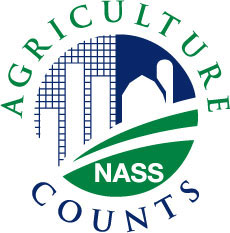
Hot, dry conditions and minimal rain allowed Iowa farmers 6.4 days suitable for fieldwork during the week ending July 25, according to the USDA, National Agricultural Statistics Service. Field activities included applying fungicides and insecticides and harvesting hay and oats.
Topsoil moisture levels across Iowa rated 14 percent very short, 39 percent short, 46 percent adequate and 1 percent surplus. In west central Iowa, topsoil moisture rated 16 percent very short, 38 percent short, and 46 percent adequate.
Subsoil moisture levels statewide rated 20 percent very short, 40 percent short, 39 percent adequate and 1 percent surplus. The shortage of moisture was especially evident in northwest Iowa, where topsoil was rated 70 percent short to very short and subsoil was rated 84 percent short to very short. In some parts of the State creeks have gone dry due to lack of rain. In west central Iowa ratings were 29 percent very short, 46 percent short, and 25 percent adequate.
The lack of precipitation is causing some stress on crops, especially in the northern third of the state. Corn silking or beyond reached 80 percent, equal to the 5-year average. Corn in the dough stage reached 21 percent, three days ahead of normal. Iowa’s corn condition was rated 65 percent good to excellent. There were scattered reports of corn in the dent stage.
Eighty five percent of soybeans were blooming, 6 days ahead of the five-year average. More than half of Iowa’s soybeans were setting pods, also 6 days ahead of normal. Soybean condition was rated 61 percent good to excellent.
The second cutting of alfalfa hay reached 83 percent complete. The third cutting was reported at 8 percent complete, equal to the 5-year average. Hay condition rated 60 percent good to excellent. Pasture condition was rated 44 percent good to excellent. High temperatures and humidity are impacting livestock and some producers are still fighting pinkeye in cows and calves.
Weather summary provided by Justin Glisan, Ph.D., state climatologist, Iowa Department of Agriculture and Land Stewardship – A transition to a less active storm track brought quieter conditions to Iowa during the reporting period with unseasonable dryness statewide; rainfall departures of near an inch were reported in northeastern Iowa. Hazy and warm conditions persisted as a stagnant pattern set up over the Midwest. Near-normal seven-day temperatures were reported in the southwest with positive departures of up to four degrees observed northeast; the statewide average temperature was 75.4 degrees, 1.2 degrees warmer than normal.
Afternoon temperatures on Sunday, July 19, stayed in the low to mid 80s across Iowa with partly cloudy skies and variable winds. Conditions into Monday morning were generally calm with isolated fog and widespread upper-level haze from western wildfire smoke observed over the Midwest. Temperatures ranged from the mid-50s northwest to mid-60s southeast with a statewide average low of 61 degrees, just two degrees cooler than normal.
Similar conditions continued into Tuesday, July 21, with extremely isolated showers producing light rain in northern and eastern Iowa; only a few stations reported rainfall with a gauge near Center Point (Linn County) collecting 0.25 inch. Overnight lows stayed in the mid to upper 60s as another small area of light rain moved over northern Iowa. A southerly wind shift into Wednesday allowed daytime highs to reach into the mid-80s across much of Iowa as gradual warming through the end of the week began. Skies remained clear overnight with a brilliant sunrise above a smokey horizon on Thursday, July 23. Sunshine and gusty southerly winds boosted highs into the upper 80s and low 90s through the day.
Cloud cover increased across northwestern Iowa in advance of a low pressure system moving through the Dakotas into Minnesota. The southern flank of the system brought showers through northern Iowa into Friday morning before dissipating in northeastern Iowa a few hours later. Rain totals were light with fewer than 30 stations reporting measurable amounts; Sibley (Osceola) observed 0.24 inch while Everly (Clay County) only reported 0.01 inch. Partly cloudy skies gradually cleared in southeastern Iowa as a weak cold front dropped south across the state producing northerly winds and slightly lower humidity. Even with the passing boundary, high temperatures remained in the upper 80s and low 90s with a statewide average high of 90 degrees, six degrees warmer than normal. As variable winds built-in overnight, a wide range of morning temperatures was reported at 7 am on Sunday, July 25; Stanley (Buchanan County) observed 57 degrees, two degrees below average, while 74 degrees was reported at Keokuk Lock and Dam (Lee County); this reading was seven degrees warmer than average.
Weekly precipitation totals ranged from no accumulation at most of Iowa’s reporting stations to 0.64 inch at Swea City (Kossuth County). The statewide weekly average precipitation was 0.02 inch while the normal is 0.93 inch. Corning (Adams County) and Sioux City Airport (Woodbury County) observed the week’s high temperature of 96 degrees on July 24, on average 11 degrees above normal. Spencer Municipal Airport (Clay County) reported the week’s low temperature of 54 degrees on July 19, nine degrees below normal.
